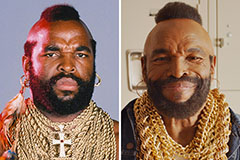Window Tinting Options: Locate the Right Shade for Your Design and Requirements
Picking the appropriate window tint for your lorry entails a mindful factor to consider of numerous variables, consisting of individual appearances, useful needs, and lawful constraints. With options varying from light tintss that use very little privacy to darker shades that enhance privacy, the selections can be overwhelming. window tinting. Understanding the effects of noticeable light transmission (VLT) portions and the benefits of different products is critical in making an educated choice. As you consider your options, you may wonder just how these components interplay to create not simply an appearance, but a customized experience when traveling.
Comprehending Window Tinting Levels
When taking into consideration window tinting, it is important to comprehend the various levels of tint offered, as they significantly influence both looks and functionality. Window tinting is categorized based on Noticeable Light Transmission (VLT) portions, which indicate the amount of light allowed to pass via the glass. The VLT percent can range from really light (over 70%) to very dark (below 5%)
The key degrees of tint consist of clear, which provides UV security without modifying visibility; light tint (over 50% VLT), which a little decreases glow while keeping visibility; tool tint (around 35% VLT), striking a balance between personal privacy and light transmission; and dark tint (below 20% VLT), offering substantial personal privacy and warm decrease however restricting exterior presence.
Recognizing these degrees is important as they can affect driving security, legal compliance, and personal comfort. In addition, neighborhood policies commonly determine permissible tint levels, varying by state or community. Consequently, prior to choosing a tint, it is a good idea to study and ensure adherence to these regulations while considering personal preferences for style and functional benefits.
Popular Tint Shades Explained

Among one of the most prominent alternatives is the classic dark tint, typically ranging from 20% to 5% VLT (Noticeable Light Transmission) This shade uses maximum privacy and a streamlined, innovative look. It efficiently obstructs UV rays and heat, making it suitable for bright climates, though it may restrict exposure in the evening.
Conversely, lighter shades such as 35% or 50% VLT give a more subtle look while still supplying some degree of privacy. These shades are best for those looking for a balance in between aesthetic appeals and capability, as they permit much better exposure and abide by numerous lawful standards.
Another emerging preference is the ceramic tint, which can can be found in a variety of shades - window tinting. It provides exceptional warm denial and UV defense without dramatically altering the vehicle's appearance

Lawful Regulations for Window Tinting
Recognizing the legal laws surrounding window tinting is vital for automobile owners seeking to customize their autos. Each state in the U.S. has certain laws regulating the darkness or agility of window tintss, often determined by Visible Light Transmission (VLT) percent. VLT refers to the amount of light that can pass via the film and the glass incorporated.
In several states, regulations dictate various VLT percents for various windowss, consisting of front windshields, side windowss, and rear windowss. Some states might permit a color of 70% VLT for windshields while permitting darker tintss for rear windowss. Additionally, specific states have constraints on reflective tintss, which can develop glow for other chauffeurs.
Failure to abide by these policies can cause penalties, mandated elimination of the tint, and boosted insurance policy costs. Vehicle owners should seek advice from regional legislations or state DMV sites to ensure they are within legal limitations before waging setup. Comprehending these laws not just assists prevent legal consequences however also guarantees a safe driving experience.
Benefits of Various Tint Products
Checking out the advantages of different tint materials reveals substantial benefits that can improve both the performance and aesthetic appeal of a vehicle. Each product uses unique qualities suited to details requirements and choices.
Dyeded window films are prominent for their affordability and capacity to decrease glow. Metalized films, on the various other hand, offer premium warmth reduction and UV protection due to their reflective homes.
Ceramic window films stand for a premium alternative, offering remarkable warmth rejection content while keeping visibility. They are non-metallic, therefore avoiding any type of signal disturbance, and are extremely sturdy, resisting scrapes and fading over time. Furthermore, ceramic films do not contain dyes, making sure a longer-lasting look.
Lastly, crossbreed films integrate components from dyeded and metalized alternatives, providing a well balanced performance in regards to heat being rejected, glow decrease, and cost. Each tint product serves special purposes, allowing automobile proprietors to pick the best fit for their way of living and visual preferences, ultimately improving their driving experience.
Selecting the Right Tint for You
Locating the right window tint involves thinking about numerous variables, including personal preferences, car type, and regional laws. Initially, assess your personal design and wanted level of privacy, as these will direct your option of tint shade. Darker tintss supply boosted personal privacy however might not be appropriate for all vehicle drivers, specifically those that like an even more open feel inside their car.
Following, consider your car type, as the size and form of windowss can affect the efficiency of specific tintss. Bigger windowss may benefit from reflective tintss that minimize glow while smaller windowss could be much more suited to dyeded films that provide subtle aesthetics.
Furthermore, it's essential to examine local regulations relating web to window tinting. Several states impose constraints on the permitted darkness and reflectivity, particularly for front windowss. Compliance with these legislations is vital to make sure and prevent fines security.
Lastly, examine the tint material that ideal suits your demands. Options include dyeded, metalized, ceramic, and hybrid films, each offering one-of-a-kind benefits associating with heat being rejected, UV protection, and longevity. By considering these aspects, you can with confidence select a home window tint that aligns with your style and useful requirements.
Final Thought
To conclude, selecting the suitable window tint calls for mindful consideration of different variables, including VLT percents, regional guidelines, and the wanted aesthetic. Different tint products use unique benefits that can enhance vehicle convenience and defense. By extensively comprehending the available choices and straightening them with specific preferences and useful requirements, one can attain an optimum equilibrium in between design and capability in window tinting selections.
Picking the ideal window tint for your lorry entails a mindful factor to consider of numerous variables, consisting of individual visual appeals, practical demands, and legal restrictions. Each state in the U.S. has specific regulations controling the darkness or agility of window tintss, typically determined by Visible Light Transmission (VLT) percentage. Some states may permit a color of 70% VLT for windshields while permitting darker tintss for back windowss.Discovering the right window tint read what he said entails taking into consideration different elements, including individual choices, automobile type, and local laws.In final thought, selecting the appropriate window tint requires mindful consideration of various variables, consisting of VLT portions, local laws, and the preferred aesthetic.
 Mr. T Then & Now!
Mr. T Then & Now! Ashley Johnson Then & Now!
Ashley Johnson Then & Now! Keshia Knight Pulliam Then & Now!
Keshia Knight Pulliam Then & Now! Nadia Bjorlin Then & Now!
Nadia Bjorlin Then & Now! Ricky Schroder Then & Now!
Ricky Schroder Then & Now!